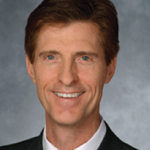
Shanvood / shutterstock.com
The College’s principal journals have been telling the tale of workforce woe, exploring the reasons for our predicament and potential solutions for the long and short term.1,2 Among the medium-term remedies is increased use of advanced practice clinicians (APCs), as we collectively refer to nurse practitioners and physician assistants in rheumatology practices.
Solutions
Estimates of the proportion of practices employing at least one APC are 25–55%. The 2015 ACR Workforce Study puts the ratio of APCs to rheumatologists in practice at roughly 1:10. Arizona Arthritis and Rheumatology Associates PC, where I practice, is a private entity that has employed APCs since its organization 25 years ago, and for several years has maintained a ratio of APCs to physicians close to 2:1. Utilization has been demand driven within a patient base predominately insured by managed care, Medicare and Medicaid. We share the same challenge that so many of our colleagues across the U.S. do with regard to recruiting new physicians in response to demand.
If the rheumatology community at large had pursued a similar strategy, our workforce projections might look very different—3,455 rheumatologists in 2030 accompanied by 6,910 (not 596) APCs. If APC productivity is the estimated 70–90% of a physician full-time equivalent, 9,674 providers would well serve the projected demand. It is certainly not too late to capitalize on the opportunity.
The integral role of APCs in rheumatology has been amply described.3-6 The College has developed a strong modular curriculum for APCs, although it is best tackled after a year or more of exposure, and more recently has developed a core curriculum schedule for training APCs.7 In March 2018, the College announced grants for the training of individual APCs. Nonetheless, rheumatologists may still feel ill equipped to identify, attract and successfully develop the right APC, because best practices for these key steps remain underdeveloped.
Challenges
The challenges of recruiting and developing rheumatology APCs include our specialty’s obscurity and the relative paucity of exposure that APCs generally get in their didactic and clinical curricula before entering the workforce.
We are the greatest impediment to this path. For the private practice rheumatologist, the economic investment and the time necessary for training can seem daunting. Reflexive concerns of physicians about empowerment and delegation come into play, and liability enters the equation. Retention is paramount, because the loss of an experienced APC can be almost as disruptive to a practice as the loss of a physician.
The ideal operational construct—whether the APC works directly with the rheumatologist, sees a separate patient panel, provides something less than full direct patient care or maintains an independent practice as NPs are allowed to do in Arizona—remains to be evaluated.
The greatest barrier to competency & confidence is complexity: the variation of presentations & physical findings of the same disorder, the ambiguity of lab studies & the complexity of treatment selection.
Prevent Turnover
When our practice experienced a rapid growth period in 2016–17, a spike in APC turnover led us to recognize that our newer physicians were not getting the mentoring they needed in the process of APC development. One measure we took was to explore the aggregate knowledge available from our APCs about how an APC achieves competency in rheumatology and what sustains them.
Our quasi-scientific administrative study was fraught with the obvious bias of recruiting participants within one company, as well as the participants knowing the interviewer and knowing the interviewer was an owner with implicit power over their employment. Nonetheless, our sample has some relevance because all of the participants had a uniform employment structure with similar operational structures—in teams consisting of a rheumatologist, one or more APCs and an administrative medical assistant responsible for a common panel of patients.
A semi-structured interview was completed by 12 volunteer participants—seven NPs and five PAs, just under half our APC population. All the participants were women with a mean age of 48 years and a mean experience in rheumatology of seven years. Participants were recruited through direct internal messaging and verbal consent. Narratives were obtained during December 2017 and March 2018. Open-ended questions were posed by a single interviewer regarding major barriers to competency, what best helped surmount those barriers, the single best and worst things about practicing rheumatology, the profile that may predict the success of an APC in rheumatology and the profile of the ideal attending rheumatologist.
APCs who had participated directly in the training of newer APCs, an advantage of our lengthy utilization pattern, were asked about what expedites a trainee’s reaching competency and self-confidence in rheumatology. Last, participants were asked what lecture format works best to enable clinical proficiency and what else rheumatologists should know about achieving success with APCs.
Responses were manually recorded and subsequently coded for similar content, then quantified in a fashion similar to directed qualitative content data analysis.
The results pointed to a number of key themes. The greatest barrier to competency and confidence is complexity: the variation of presentations and physical findings of the same disorder, the ambiguity of lab studies and the complexity of treatment selection. Overcoming the barriers required continuous feedback from the physician and other team APCs on these elements, as well as reading and physician lectures.
APCs see this complexity as the worst thing about rheumatology, but at the same time, the best thing, in that it leads to constant variety in the day’s work, the stimulation of solving clinical puzzles and seeing the results of therapy in a complex disease, as opposed to the narrowness of challenges in other disciplines.
The profile of the successful APC is the person who is attracted to that complexity and thrives in long-term relationships with patients.
The ideal attending is an inexhaustible fountain of teaching and reinforcement on the fly, someone who identifies holes in knowledge and kindly fills them in, and who leads a team with singularity of purpose for the panel.
APCs expect to play a role in the full spectrum of rheumatic diseases and their management—working at the top of their licenses.
Those APCs who have trained others in rheumatology reinforce the benefit of early, intense exposure to physical findings and their variations and alert other teams to call in the trainee when less common findings present.
Experienced APCs appreciate the high science of lectures in immunopathology and treatment target molecules, but the ideal lecture is completed in 45 minutes, including questions and answers, and delivers content that directly boosts their ability to function in the clinic.
APCs aspire to be treated as valued clinicians and to have that value conveyed by their attending to patients, primary and other referring physicians, and to outside consultants.
With all these features in place, flexibility in employment related to work-life balance is the secret sauce of sustainability.
More Sources
Scoping other sources for perspectives from rheumatology APCs provides a measure of concept validation. In March 2019, we sought a confidential assessment from our director of human resources on the most prominent elements of practice satisfaction reported among 25 APCs during their annual employment reviews. Above all, our APCs valued the opportunity to specialize. Beyond this, not surprisingly, attributes reminiscent of those identified in the administrative study emerged. Satisfaction next related to the quality, comfort, flexibility, directness and openness of the relationship with the attending rheumatologist(s). Longevity of patient relationships, the visibility of treatment results from their care, and low mortality among their patient panel were also conveyed.
At the second annual Phoenix Rheumatology Association Strategic Training in Rheumatology for APCs held in Glendale, Ariz., March 29–31, 2019, a convenience survey was conducted with participants organized into six groups of four to nine members. Input was aggregated from 26 nurse practitioners and 24 physician assistants with a mean rheumatology practice experience of four years (range <1 to 31 years). Groups were asked to deliberate on how the rheumatology profession should promote careers and training for APCs in rheumatology, the most effective working environment, what measures drive career endurance and what else the profession should be asking.
Promotion of rheumatology, per the participants, would benefit from exposure in school by guest speakers, clinical rotations and job fairs. Participants endorsed the prospect of fellowships, rheumatology certification and more APC-focused conferences. General training elements should consist of clinical training by local mentors reinforced by nationalized didactic curricula, such as the ACR modular program, and supplemented by guidelines and training videos for new hires.
The most effective working environment would provide open communication with a supportive, respectful rheumatologist in a team structure, with more independence as experience accrues, supplemented with a variety of educational modalities and exposures.
Retention is driven by feeling valued and supported, transparency in achieving a competitive income, a broadly defined role in rheumatology and work-life balance. In private practice, consideration of a partnership model for long-experienced APCs should be considered. Additionally, the profession should make the APC universe aware of the huge projected demand in the field. Accordingly, APCs should not be relegated to unproductive work to lighten the load of the rheumatologist, but rather deployed to help shoulder that demand.
Training: The Physician’s Responsibility
Academic and public institutions that employ rheumatologists may bear the financial risk of developing advanced practice clinicians, but the physician staff must still provide the training. In private practice, the rheumatologist must do both. The realpolitik is that all rheumatologists may not be geared to train, empower and delegate effectively. For those who are, our practice community must pool its collective knowledge and pursue more stringent qualitative research on best practices for recruitment and selection, and strategies for training, career development, retention and management.
We should start by listening.
 Paul H. Caldron, DO, PhD, MBA, is a clinical associate professor at Midwestern University, Arizona College of Osteopathic Medicine; a clinical assistant professor at the University of Arizona College of Medicine; and a practicing rheumatologist at Arizona Arthritis and Rheumatology Associates, Phoenix.
Paul H. Caldron, DO, PhD, MBA, is a clinical associate professor at Midwestern University, Arizona College of Osteopathic Medicine; a clinical assistant professor at the University of Arizona College of Medicine; and a practicing rheumatologist at Arizona Arthritis and Rheumatology Associates, Phoenix.
References
- Battafarano DF, Ditmyer M, Bolster MB, et al. 2015 American College of Rheumatology workforce study: Supply and demand projections
of adult rheumatology workforce, 2015–2030. Arthritis Care Res (Hoboken). 2018 Apr;70(4):617–626. - Bolster MB, Bass AR, Hausmann JS, et al. 2015 American College of Rheumatology workforce study: The role of graduate medical education (GME) in adult rheumatology. Arthritis Rheumatol. 2018 Jun;70(6):817–825.
- Hooker R, Rangan B. Role delineation of rheumatology physician assistants. J Clin Rheumatol. 2008 Aug;14(4):202–205.
- Hooker R. The extension of rheumatology services with physician assistants and nurse practitioners. Best Pract Res Clin Rheumatol. 2008 Jun;22(3):523–533.
- Solomon DH, Bitton A, Fraenkel L, et al. Roles of nurse practitioners and physician assistants in rheumatology practices in the US. Arthritis Care Res (Hoboken). 2014 Jul;66(7):1108–1113.
- Solomon DH, Fraenkel L, Lu B, Brown E, Tsao P, Losina E, et al. Comparison of care provided in practices with nurse practitioners and physician assistants versus subspecialist physicians only: A cohort study of rheumatoid arthritis. Arthritis Care Res (Hoboken). 2015 Dec;67(12):1664–1670.
- Smith BJ, Bolster MB, Slusher B, et al. Core curriculum to facilitate the expansion of a rheumatology practice to include nurse practitioners and physician assistants. Arthritis Care Res (Hoboken). 2018;70:672–678.



